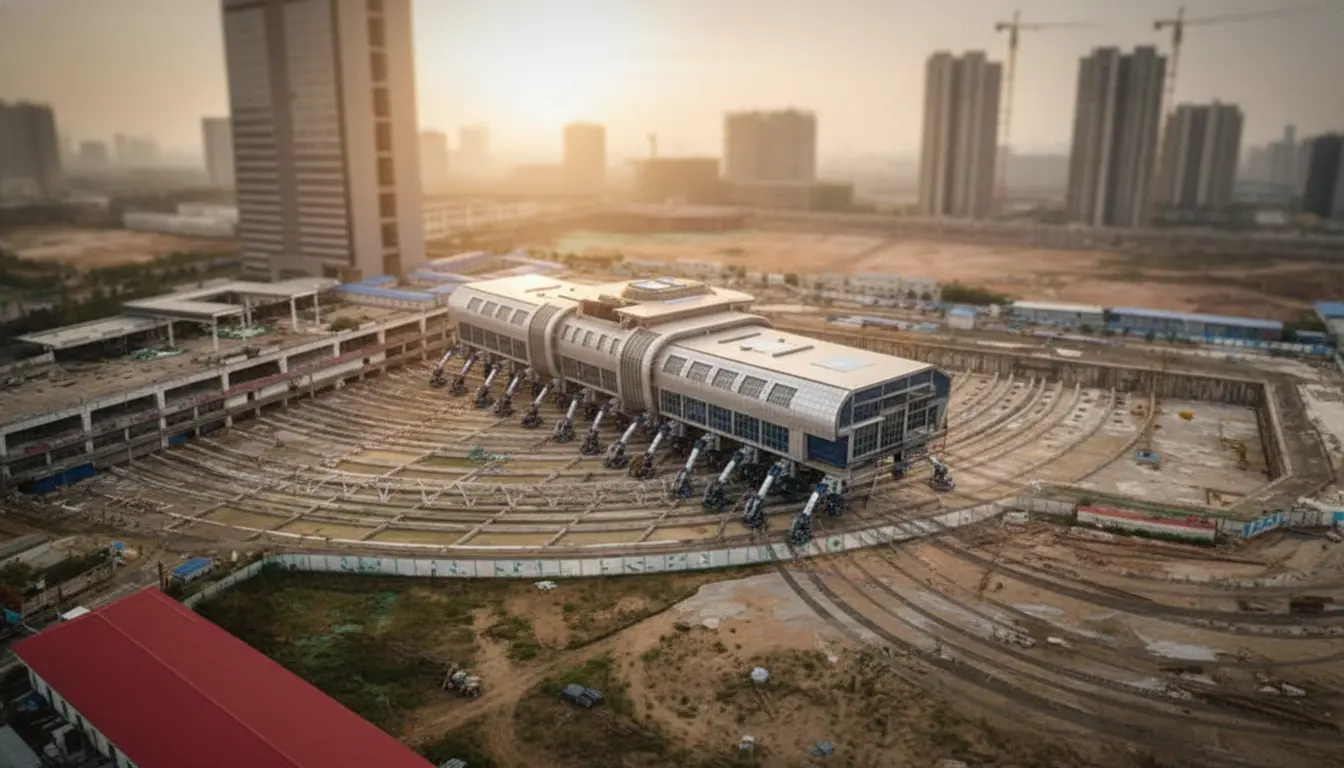When a 30,000-ton building moonwalks nearly 300 meters without a single wrecking ball in sight, you know you’re witnessing something truly earth-shifting. In China, a feat of civil engineering has quite literally moved the needle—and an entire bus station—with surgical precision, zero demolition, and just a hint of technical wizardry. Welcome to the journey of the Houxi Long Distance Bus Station, the (rolling) stone that gathered no dust.
The Problem That Couldn’t Be Lifted
In 2019, Xiamen, Fujian Province, found itself between a rock and a fast place: a shiny new high-speed railway was coming through, but right in its path stood the Houxi Long Distance Bus Station. Recent, massive, and with a weight that makes King Kong look lightweight—30,000 tons to be precise—this building presented a headache for even the most seasoned movers. Traditional approaches like demolition or cranes were off the table, both due to the sheer scale and the costs involved.
So, what’s a city to do when you can’t go over the problem or under it? You go around—and forward. The plan: keep the building intact, reorient it, and then shift it to a new foundation… all within a short hop, still in-plane with its former location.
Making a Colossus Glide: Engineering in Action
The solution? Something called « assisted structured translation. » Basically, imagine 532 hydraulic jacks operating under the bus station, working in alternation like the world’s most coordinated squat team. Alongside, motorized rails provided a controlled path, as computer systems meticulously synchronized micro-lifts and micro-movements to avoid damaging the structure. No torsion. No cracking. Just a steady, gentle progression—like a continental drift on fast-forward.
- 40 days of movement, about 20 meters per day
- Total journey: 288 meters
- First, the whole station was pivoted, then slid to its new spot, element for element, nothing lost
Throughout this epic odyssey, technicians kept a constant vigil, balancing structural load, ensuring the steel and foundation remained as solid on day 40 as day one. The result? A Guinness World Record for the heaviest building ever moved on rollers—an engineering category not previously known for being crowded.
Spectacle in Slow Motion—But Why?
The story didn’t just play out on-site. Time-lapse videos rocketed across Chinese social networks. Viewers marveled at the sight of the station gliding with such poise you could almost believe it was strutting on a catwalk. The slow, deliberate process fascinated the public, capturing not just technical prowess but a tangible sense of something living, breathing, and moving.
But beneath the show lies real, tangible gain:
- Demolishing and rebuilding would have cost more—original construction price in 2015: approximately 36 million euros
- The moving operation? Roughly 7 million euros
- Minimal dust, minimal noise, and much less neighborhood disruption
Not only did the method save significantly in money, it preserved vital infrastructure and slashed waste. Local authorities emphasized the win-win: less cost, less time blocked, and a gentler footprint for the city.
Beyond the Record: Lessons for the Future
This « walk » has made its mark beyond the record books. Engineering faculties are now poring over coordination strategies for hydraulic jacks, the management of supports, and safety margins. The takeaway? Success hinges on meticulous planning, sturdy structure, adapted foundations, and precise load phasing at every step.
There’s a growing interest in this approach, notably for dense urban environments where demolition-rebuild cycles are anything but optimal. Shifting or reorienting a building can sometimes thread the needle between tight schedules, service continuity, and material frugality. The environmental upside is clear: reduced rubble, fewer evacuation trips—so long as you keep your moving circle tight.
But, a word of caution: not every city can make its buildings do the tango. Site conditions, building geometry, underground networks, and neighbors all set real boundaries. Each scenario demands fine-tuned study and the ability to adjust weight distribution in real time. Above all, true innovation means sensible choices, steered by risk management and surgical precision—not bravado.
This Chinese engineering episode proves a construction site can protect what exists, master its own disturbances, and stay on budget without breaking a sweat. The path charted here will surely inspire, if only on the margins, other projects facing tight timelines or strict operational requirements. Guinness will keep the record, but engineers will be eyeing a smart method worth repeating… carefully.

John is a curious mind who loves to write about diverse topics. Passionate about sharing his thoughts and perspectives, he enjoys sparking conversations and encouraging discovery. For him, every subject is an invitation to discuss and learn.





